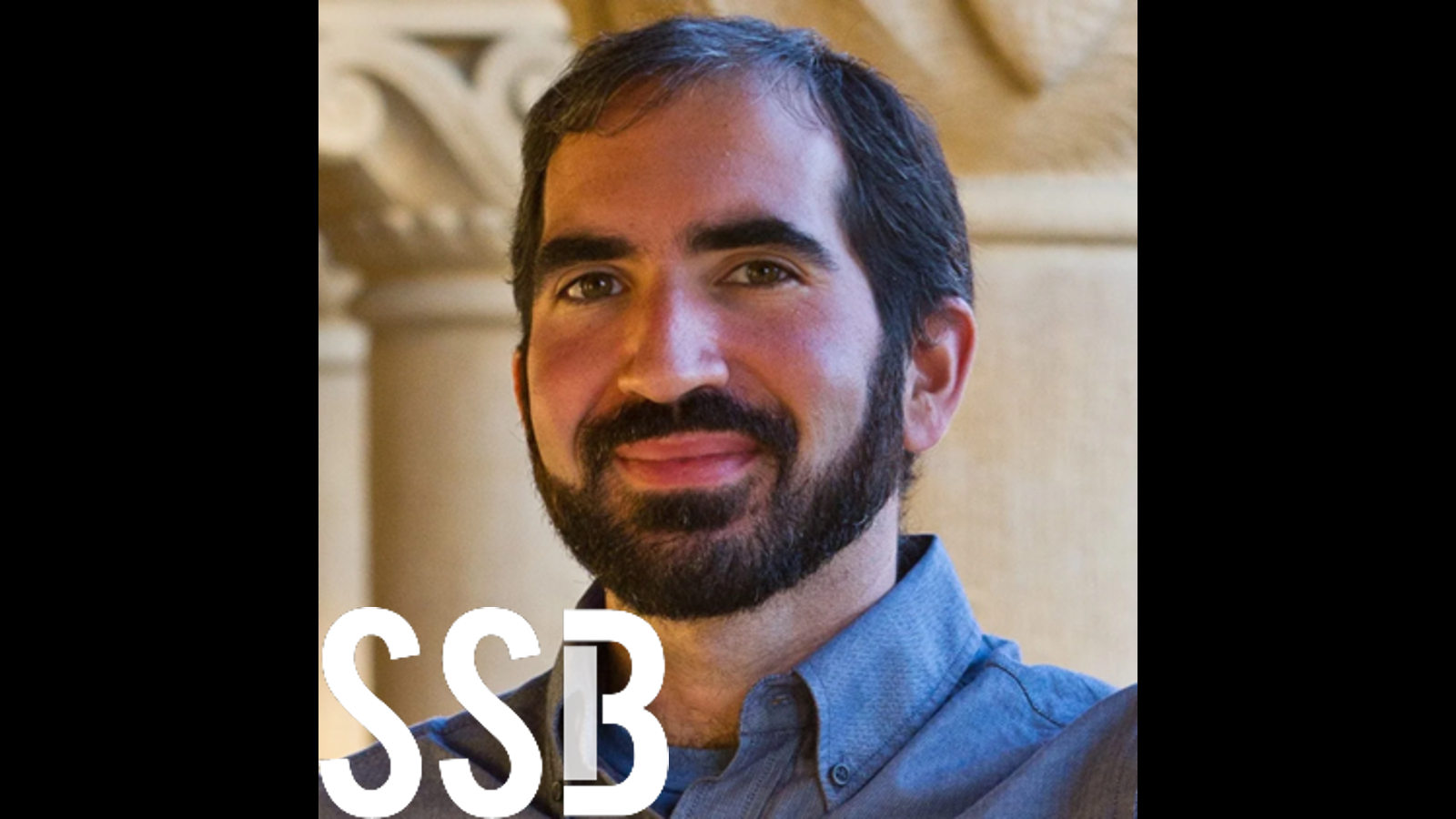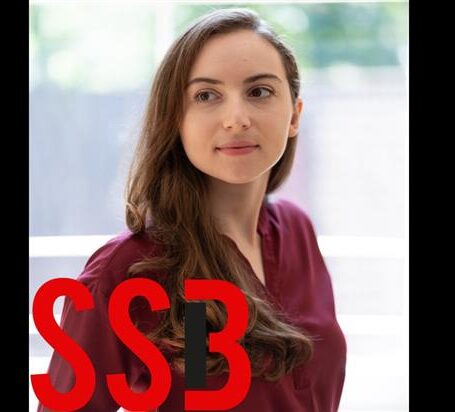Nick Camp on Trust in the Criminal Justice System
The relationship between citizens and their criminal justice systems comes down to just that – relationships. And those relations generally start with essentially one-on-one encounters between law enforcement personnel and individuals, whether those individuals are suspects, victims or witnesses.
When those relations get off on the wrong foot – or worse, as in the case of a number of high-profile police killings in the United States attest to – the repercussions can resonate far away from where a traffic stop occurs. This is the field that social psychologist Nick Camp researches. As his website at the University of Michigan explains, Camps studies “the role routine police-citizen encounters play in undermining police-community trust, and how these disparities can be addressed.”
As he tells interviewer David Edmonds in this Social Science Bites podcast, “[O]ne of the things that we know from research and procedural justice is that when people don’t view policing as legitimate, they’re less likely to cooperate with police requests for assistance, for example. Until now, it’s hard to find experimental evidence for this, but one of the things we can use body cameras for is not just to look at disparities in these interactions, but their consequences.”
In this episode, Camp cites research on body camera footage, traffic stops, and even first names to describe how anecdotal tropes about often poor police-citizen interactions, especially in the African-American community, are borne out by the reams of data modern recording devices provide. He also offers hopeful signs of improving these relationships with training based on this very same data, and suggests that artificial intelligence might be useful in mining this data for more insights.
To download an MP3 of this podcast, right-click this link and save. The transcript of the conversation appears below.
David Edmonds: You don’t need a criminology PhD to know that African Americans are more distrustful of the police and the justice system than white Americans. Why? Of course, there are many reasons, but they include some that have been revealed in fascinating research by Nick Camp, a social psychologist at the University of Michigan. Nick Camp, welcome to Social Science Bites.
Nick Camp: Thank you for having me.
Edmonds: We’re going to concentrate today on trust in the criminal justice system, and in particular how it differs between Black and white citizens in the United States. It’s not a new phenomena, of course, and a defining episode was the killing of George Floyd. Perhaps you can remind us of that incident and tell us what impact it had on attitudes to the police and to the law.
Camp: Yeah. So you know, the environment of distrust and even violence between Black Americans and law enforcement is nothing new. You can go back to the 60s. I got involved in this research in 2014 after the killing of Michael Brown, but perhaps the most recent event that we’re familiar with is the murder of George Floyd by Derek Chauvin in 2020. George Floyd was a 46-year-old African-American man who allegedly used a counterfeit $20 bill to pay for an item in Minneapolis. Derek Chauvin and three other police officers show up and essentially suffocated George Floyd. And so that killing sparked protests, not just in Minneapolis and the United States, but around the world, and really brought out the fraught relationship between law enforcement and communities of color.
Edmonds: As you say, it was nothing new. Was there something particular about this episode that sparked off these demonstrations? Was it just the straw that broke the camel’s back?
Camp: Well, there’s two ways of looking at it. Certainly, the entirety of this interaction was caught on bystanders’ cell phones and also it happened in a context where there was body-camera footage, so more people were exposed to the entirety and the intensity of this interaction. Another way of looking at it is a lot of times these precipitating events, these kinds of sparks, occur in a context where there’s already a fraught relationship, there’s already strained history of interactions. You can really interpret this event in either of those lenses.
Edmonds: So you’ve been involved in various interesting research projects. Let’s get into the weeds of that a little. One is on name bias in the courtroom. Tell us about that.
Camp: Yeah, so I think the common thread through a lot of my work is a lot of times we tend to think of racism or bias as being one person being prejudiced against another person from a different group. But that isn’t really the way that a lot of inequities are perpetuated the criminal justice system. This is work led by Toni Kenthirarajah, looking at maybe an underappreciated cue in these inequities, and that’s legal defendants’ names. So in this research, we looked at sentencing disparities among African American defendants in Florida just based off of how stereotypically Black their name was perceived to be. So we compared sentencing decisions from people named like Jamal, which [is a] stereotypically African American name, to a name like Mark, which has fewer of those associations. And what we found is that even after you account for the severity of the crime the defendant was accused of, even if you count for age and a lot of these other potential confounds, just that stereotypicality of the name had an influence on how severe the punishment was, how severe the sentencing was.
Edmonds: Is it possible to put a number on it by how many years, by how much of an increase in the fine did this name make a difference?
Camp: Yeah, on average, a name that’s one standard deviation more stereotypical resulted in a sentence of about 409 days longer. So that’s an additional year behind bars for just a name. And I’ll also add that in this study, all of the defendants were African-American men. So I think this is a really kind of pernicious form of racism, right? Because it doesn’t fit that model of distinguishing between white defendants and Black defendants. Really, this is about those racial stereotypes influencing decisions among African-American men.
Edmonds: And is this an example of what people call unconscious bias?
Camp: It’s hard to say how to suss out how much is conscious and how much is unconscious. I will say that this is a cue that most of us are not really attending to, because we think of names as something that individuates people, that sets people apart, right? I’m Nick, that’s what sets me apart from other people in the classroom. But this is a case where names are leading people to fall back on biases and fall back on these stereotypical associations. So you know, how much of this is conscious and how much is not, at the end of the day, it still has an impact on one of the most high-stakes decisions that could be made about one’s life.
Edmonds: And you found the impact both in reality in the courtroom, but also you followed it up with an online experiment in which participants were asked to carry out the sentencings themselves.
Camp: That’s right. And so this was a context where we could give people the exact same circumstances and only change the defendant’s name, and then we replicated these results that we saw in the courtroom.
Edmonds: So that’s a remarkable and scary discovery. Something else you’ve looked into is evidence from body cameras. I guess that’s a very new source of data. What did you do exactly with the body camera data?
Camp: Yeah, so body cameras, by this point, they’ve been in circulation in the US for about 10 years. I think the first ones were deployed in the UK in like 2005 actually, in officers’ hats. But what’s new is a lot of times we think about this footage as evidence, either for criminal cases or for cases of officer misconduct, but we haven’t really considered it as a source of data. And what that means is that the vast majority of these thousands and thousands of interactions are being caught on camera and never get looked at, and that’s really a missed opportunity to understand parts of policing that we can’t otherwise have access to, to understand their consequences and, most importantly, understand how to change them.
Edmonds: So you looked at just routine exchanges between police and those they’d stopped. What did you discover?
Camp: Right, we looked at traffic stops from one month of stops in Oakland, California. And what we did was we created basically a script of these interactions and looked at officers’ language when they were talking to white or Black drivers. And first thing we noticed is that most things that officers say to most people are pretty neutral to positive. But when you kind of zoom out and look at these large numbers of interactions, we observe these disparities where officers are expressing more respect towards white drivers than African American drivers, and this is true once you account for where traffic stops took place, things like the officer’s race or the driver’s gender. And we can also use this footage to really zoom in and see that these disparities occur in the very first moments of traffic stops and accumulate over the course of the interaction.
Edmonds: So it was equally true when the police officer was Black?
Camp: That’s right, it could be a function of just the number of officers in our, in our sample, but that was something that surprised us, that this really seemed to be something about speech directed towards white and Black drivers, and not speech coming from white or Black officers.
Edmonds: And you talk about there was just less respect in the interchange. Who’s to judge what counts as respect?
Camp: So we’ve replicated this study a few different ways. We’ve had Stanford undergraduates look at just brief kind of text snippets of these conversations. We’ve had folks listen to audio clips. We’ve had community members from the Department of Motor Vehicles office. And these participants are all blind to the race of the person the officer is talking to, but they still pick up on these differences. So officers are more likely to express concern for white drivers, so saying things like, “I just want you to be safe” or “be careful out there.” They’re more likely to use respectful titles like sir, ma’am, and they’re also more likely to end the stop by telling the driver to be safer, to show concern.
Edmonds: Right, I’ve never been stopped by the police in the UK, and I get the feeling that pulling people over in their cars may be more common in the US. What’s the legal situation? Do the police need a valid excuse to do this?
Camp: So the traffic stop is the most common way in which people in the US come in contact with law enforcement, and the legal threshold for conducting a traffic stop is that there’s reasonable suspicion that you’ve committed any kind of traffic offense. So that can be anything from broken tail light, expired registration, to speeding while on your cell phone, going the wrong way on a one-way road. So there’s really a wide swath of reasons why people can be stopped by the police.
Edmonds: I’m assuming they’re not legally allowed to stop people on the basis of their race. But is there any evidence that African Americans are more likely to be stopped when police officers identify the race of the driver?
Camp: There’s some great research from Sharad Goel and Emma Pierson, which uses a data set of millions and millions of traffic stops across the United States. And specifically, they zoom in on daylight savings time. So it’s the same time of day, the only difference is that a couple of times a year, it’ll be light on one day and dark on another day at the same time. And by zooming in on these days as kind of like a natural experiment, they find that Black drivers are stopped disproportionate rates when it’s light outside, and the officers can distinguish the race. So we know from these kinds of studies that there’s evidence for this kind of profiling. One of the perspectives I take in my research is that a lot of times we kind of really hone in on the question about are officers biased or not, but we don’t really think about what those decisions mean for the drivers in those interactions. And what it means is that if you’re a driver of color stopped for something like a broken taillight, you have more reason to kind of question whether that’s the actual reason for the stop or not, and that really changes how that interaction is experienced.
Edmonds: Does that mean that you might observe or hear more aggression on behalf of the driver, the driver’s language because they are suspicious about the motive for why they were stopped?
Camp: That’s a great question. There’s some challenges in analyzing the driver’s speech. First, police officers tend to direct most of the conversations, so most of the things that drivers say are in response to the police. But we do have some data looking at traffic stops that ended in an arrest, search or handcuffing, versus those that didn’t, and we can distinguish between these based off of how the officers lead off those interactions. But most of the time, the drivers aren’t really saying much at all in the beginning. So to the best of our knowledge, this isn’t something driven by drivers, it’s something driven by officers. I’ll also add that from our analysis of police officers’ language, those racial disparities and respect emerge in the very first moment, so even before the driver says a word.
Edmonds: Why might the officers stop cars? I mean, that sounds like a naive question, but what’s their incentive?
Camp: Well, I think that’s one of the things that kind of ambiguates these interactions for the drivers, because there’s really a range of reasons why an officer can stop you. An officer might have concern for the state of your vehicle, you know if you’re driving on the cracked windshield, that poses a risk to you. An officer might have directives from within the department to focus on a certain type of enforcement. So every now and then, officers really hone in on cell phone use, or they might be more vigilant around the holidays to make sure that folks aren’t driving while impaired. But another element which adds this ambiguity is that officers in the US are empowered and encouraged to use traffic offenses for the purpose of investigation. So the idea here is, if you suspect that a driver might be committing a more serious offense than a traffic violation, you can use an expired registration tag to stop them, and then, you know, ask them questions about what they’re doing in the neighborhood, to see what’s in plain view [in the vehicle]. And so a lot of times, these routine traffic stops can be a vehicle for investigation.
Edmonds: And in some ways those all sound like reasonably legitimate reasons to stop people, I guess. But are there also financial incentives for the police to pull people over and fine them?
Camp: That’s true. So you know another way in which I think we’ve kind of put blinders on and just thinking about our officers’ bias or not is, I think that type of question downplays the role that organizations and institutions play in these behaviors. As I mentioned, a lot of times these investigatory stops are lauded as being true policing or active policing, and it’s also the case that departments might tie advancement in those organizations to enforcement as a sign of productivity. And so another lesson that I think this example teaches us is that a lot of times the data that’s available is what gets used, incentivized by the organization, and one of our hopes with body cameras is maybe they can capture some of those elements of policing that we know are important, building trust, interacting respectfully with the public, and make those visible in a way that enforcement decisions usually aren’t.
Edmonds: Because what’s the overall impact of this lack of trust between, in particular, African Americans and police? And I guess for many people, it might be a one off, but they’re also hearing about their friends, their members of the family, facing the same kinds of interactions. Is it possible to measure how damaging it is across a whole community?
Camp: That’s right, it’s not a one-off decision from an officer, it’s a relationship, right? And over time, these relationships have consequences. So one of the things that we know from research and procedural justice is that when people don’t view policing as legitimate, they’re less likely to cooperate with police requests for assistance, for example. Until now, it’s hard to find experimental evidence for this, but one of the things we can use body cameras for is not just to look at disparities in these interactions, but their consequences.
So one of the studies that my colleagues and I ran, we looked at another cue, not officers’ verbiage, but just their tone of voice. And not only did we replicate these disparities, officers used more respectful tone of voice with white versus Black drivers, but we also exposed participants to repeated interactions of officers communicating with white or Black drivers and measured their effects for trust. And we found two things. First, we found that even though our participants didn’t know the race of the person the officer was talking to, when they were exposed to repeated interactions with Black drivers, they reported less trust in the broader police department, they’re more skeptical that it cared about members of the community. And alongside these causal effects of officer communication, we found that participants who entered the study with a higher level of trust in law enforcement just view those interactions more positively than those who are more skeptical.
So to me what this shows is how these routine interactions over time can build or erode trust where there’s differences in respect, there’s respect change how people relate to those institutions, and then those beliefs shape how folks experience subsequent interactions. And like you said, it’s not just my encounters with law enforcement, it’s my friends, my family, other people in my community, too. So there’s really these, kind of snowballing of consequences once we zoom out from specific officer decisions.
Edmonds: So you’ve laid out the problem. What’s the solution? You mentioned that it’s unclear how much of this is due to conscious, how much is due to unconscious bias, but we do know through lots of studies now that unconscious bias training is not very effective. What can one do?
Camp: That’s right, it’s not very effective with undergraduates, and there’s evidence coming out that it’s not very effective with law enforcement, at least not in changing stop-and-search behavior. The lesson I take away from the work that we’ve done is there’s a lot to gain from focusing on interactions and relationships. And so one of the things that my colleagues and I have looked at is what happens if you use some of these tools that we’ve used to diagnose issues with police community interactions to intervene on them. We’ve recently evaluated basically a program really zooming in on some of these communication techniques, and we’ve used body camera footage to evaluate that training to see whether officers are actually using the techniques that the trainings teach them, and the results suggest that they are. So for me, one of the takeaways from our research is that let’s not just focus on officer decision making, let’s not just focus on officer attitudes, but let’s really try to focus on officer relationships.
Edmonds: That’s a very comforting result. Have you been able to tell how long the result lasts? I mean, I’m just wondering whether, if you’ve had the training and you’re sent off into the field, you might be inoculated for a short period, and then it will wear off.
Camp: That’s right. So, in our study, I think we looked up to 90 days post-training. There’s a real question with any kind of intervention and any kind of training, just how durable are the effects. So I don’t have that data now, but one of the things that excites me about body camera footage is that it’s always being accumulated, right? So there’s an opportunity not just to measure change at one point, but to really chart these interactions over time, and that’s something that I’m optimistic these tools can be built to help kind of monitor the durability these effects.
Edmonds: So let me ask you a slightly left field question. I’m wondering whether AI will help in the future. You’ve got these enormous data sets now from these body cameras and presumably artificial intelligence might help identify patterns that humans miss.
Camp: So yeah, I think this is one of the most exciting parts of thinking about this footage as data, and for thinking specifically about officers’ language and how much it communicates. In our work on language, we’ve used natural language processing to kind of scale up from these human judgments to larger number of stops. This is something that various companies and platforms are getting into. I think there’s great promise. I think there’s also- it raises questions about what are these models designed to do and who has access to them? So some of the platforms that are out there advertise a like virtual press assistant, which specifically screens interactions for positive language and selects them so that they might be shared with the public. What I’m really hoping platforms and police departments use this technology and use this data for isn’t just to look good, but to really ask and answer these tough questions. So I think there’s a lot of promise in the future. You know to realize that promise, I think we have to use this footage as data to get at these tough questions.
Edmonds: And where does your research go next?
Camp: So a few different questions that we’re exploring. One of the things that I’m looking at right now is, how do Black and white Americans experience these interactions differently physiologically? When we ask people in surveys about how stressed out they’d feel in these interactions, people say one thing, but we’re actually looking at people’s heart rate and physiological stress to see whether the impacts of police disrespect might diverge across white and Black Americans. I think there’s also just a lot of exciting work that we’re doing on body camera footage and training and using as a tool to evaluate those. So I think that once you have new types of data, and once you have new ways of thinking about it, it just kind of builds up these questions.
Edmonds: We’ll have to come back to you in a couple of years to find out the results. But Nick Camp, thank you very much indeed.


































































































